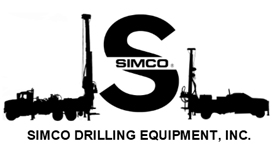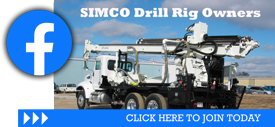Damaged equipment and serious burns are the least of the possible results when a drilling rig comes in contact with live power lines. Earlier this year, two men died when their drilling rig hit an overhead powerline during soil sample collection. Does your drilling crew know how to prevent electrocutions from contact with overhead power lines?

Nearly one-third of crane-related fatalities were caused by electrocution and half of those deaths occurred when the crane boom or cable came into contact with an overhead power line. The Occupational Health and Safety Administration (OSHA) published their revised requirements in 2010 and their proactive approach to safely working around overhead power lines is still imperative.
- Assess the Hazard: Before any work begins, a crew must first perform a hazard assessment. This includes identifying the work zone and checking for power lines before determining how close to existing lines any high-reaching equipment may get. If the crane could get closer than 20 feet, further action must be taken.
- Eliminate the Hazard: If the work will bring the crane within the safety perimeter, the first option is to de-energize or visibly ground the power lines. If this isn’t possible, another option is to move the line as far from the site as possible while still maintaining function.
- Keep Your Distance: Depending on the voltage of the line in question, OSHA provides minimum clearance distance guidelines for the equipment, including any load being carried by the equipment. For example, minimum distance is 10 feet for lines up to 50 kV and 45 feet for lines 750-1000kV.
- Establish Precautions: Create a plan with the operator and other on-site workers to discuss the safety measures to put in place. Use non-conductive tag lines, set up and maintain an elevated warning line or barricade visible to the operator, use a proximity alarm, range of motion limiting device, insulating link, or non-conductive cages surrounding the boom of the crane.
- If You Hit a Line: The crane operator is should stay in the cab and all other workers stay clear of the equipment as they wait for the line to be de-energized. If a fire requires the operator to vacate the cab, he or she must jump from the cab, landing on both feet and being careful not to touch any part of the crane and the ground at the same time.
The leading cause of death in crane-related incidents, including those involving drilling rigs, continues to stem from contact with overhead power lines. This makes it imperative that your drilling crews know how to assess the work zone, eliminate the hazard, set up safety precautions and react safely if contact is made. For more detailed information about drilling rig, crane and derrick safety requirements, visit the OSHA website.



